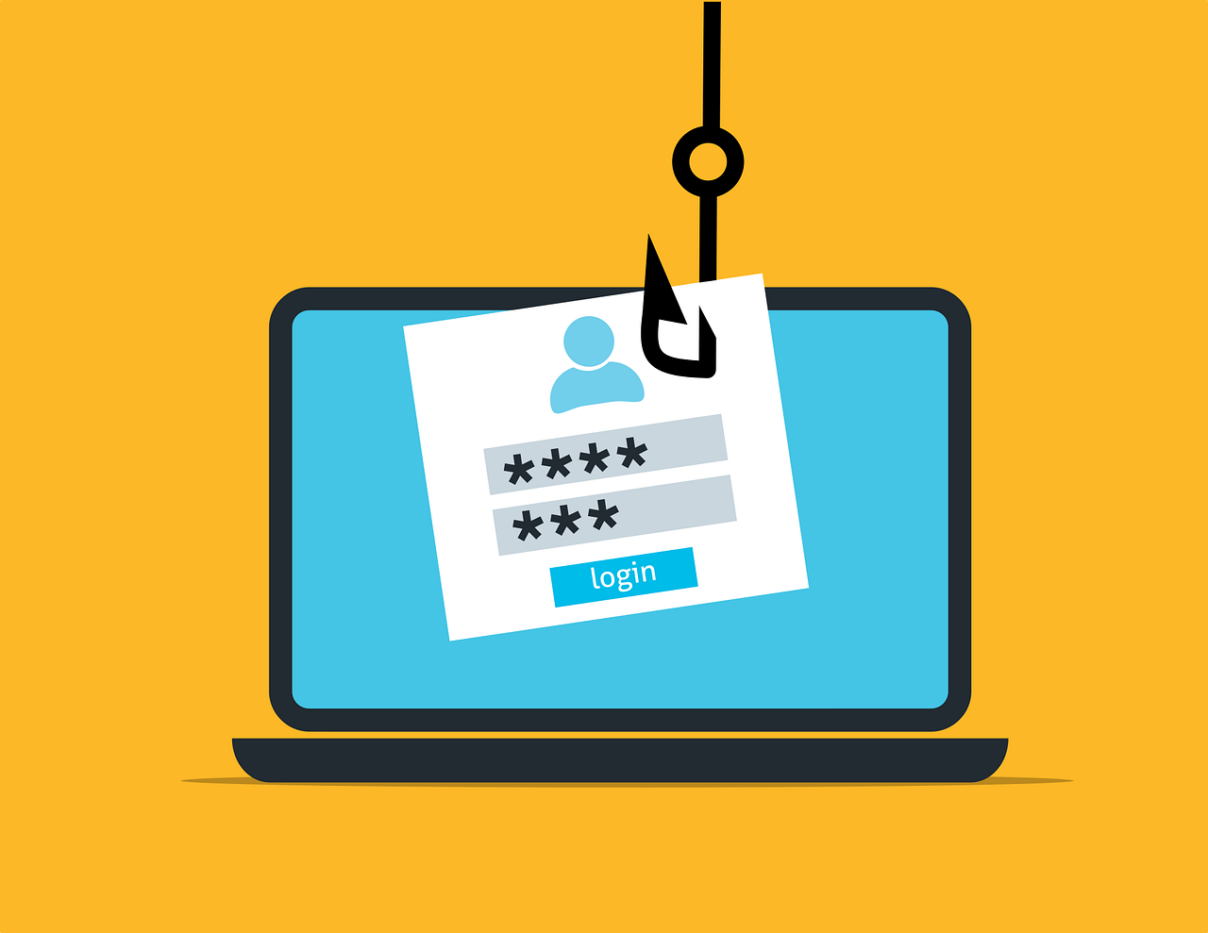Comercio Electrónico
27 de febrero de 2025
SAFEGUARDING DIGITAL IDENTITIES: A COMPREHENSIVE APPROACH TO SECURITY, ETHICS, AND HUMAN RIGHTS
Introduction
Digital identity theft refers to the unauthorized acquisition and use of someone’s personal information through digital means, often for fraudulent purposes. This type of theft can involve stealing data such as social security numbers, credit card details, or login credentials. The stolen information is then used to commit various forms of fraud, including financial fraud, medical fraud, and more. The rise of the internet and digital technologies has significantly increased the volume and accessibility of personal data, making digital identity theft a growing concern.
One common example of digital identity theft is financial identity theft, where a thief uses stolen financial information to make unauthorized transactions or open new accounts in the victim’s name. This can lead to significant financial losses and damage to the victim’s credit score. Another example is medical identity theft, where the thief uses someone else’s personal information to obtain medical services or drugs, potentially altering the victim’s medical records and leading to serious health risks.
Social media impersonation is another prevalent form of digital identity theft. In this scenario, the thief creates fake profiles using the victim’s name and photos to deceive others. This can be used to scam the victim’s friends and family or to damage the victim’s reputation. Similarly, synthetic identity theft involves creating a fake identity using a combination of real and fabricated information, which can be used to pass various authentication checks and commit fraud.
Identity theft poses significant challenges for businesses, impacting their financial stability, reputation, and operational efficiency. When businesses fall victim to identity theft, they often face substantial financial losses due to fraudulent transactions and the costs associated with rectifying the situation. Additionally, the reputational damage can be severe, as customers may lose trust in a company’s ability to protect their personal information. This erosion of trust can lead to a decline in customer loyalty and a potential loss of business. Furthermore, businesses may incur legal consequences if they fail to comply with data protection regulations, resulting in fines and other penalties.
Beyond the financial and reputational impacts, identity theft also raises significant human rights concerns. The unauthorized use of personal information can lead to violations of privacy rights, as individuals’ sensitive data is exposed and misused. This can result in emotional distress and a sense of vulnerability among victims, who may feel that their personal autonomy has been compromised. Moreover, identity theft can lead to discrimination and social exclusion, particularly if stolen information is used to commit crimes or fraudulent activities that tarnish the victim’s reputation.
The intersection of identity theft and human rights is particularly evident in cases where stolen identities are used to access essential services, such as healthcare or social benefits. Victims may find themselves denied access to these services or facing legal and financial repercussions for actions they did not commit. This can exacerbate existing inequalities and create additional barriers for marginalized individuals and communities. As such, addressing identity theft requires a comprehensive approach that considers both the technical and human rights dimensions of the issue3.
To effectively combat identity theft, businesses and policymakers must collaborate to implement robust security measures and promote awareness about the risks and consequences of identity theft. This includes investing in advanced cybersecurity technologies, conducting regular security audits, and providing training for employees on best practices for data protection. Additionally, legal frameworks should be strengthened to ensure that victims of identity theft receive adequate support and that perpetrators are held accountable for their actions. By taking a proactive and holistic approach, we can mitigate the impact of identity theft on both businesses and individuals, safeguarding financial stability and human rights alike.
Techniques and Methods of Identity Theft
Identity theft involves various techniques and methods that criminals use to obtain and exploit personal information. One common technique is phishing, where attackers send fraudulent emails or messages that appear to be from legitimate sources, tricking individuals into providing sensitive information such as passwords, credit card numbers, or social security numbers. These messages often contain links to fake websites that closely resemble real ones, further deceiving victims. Phishing can also occur through phone calls (vishing) or text messages (smishing), making it a versatile and widespread method of identity theft.
Another prevalent technique is data breaches, where hackers infiltrate databases of organizations to steal large volumes of personal information. These breaches can occur due to weak security measures, insider threats, or sophisticated cyber-attacks. Once the data is obtained, it can be sold on the dark web or used directly for fraudulent activities. High-profile data breaches, such as those involving major corporations or financial institutions, can compromise millions of individuals’ information, leading to widespread identity theft.
Skimming is a method where criminals use devices to capture information from credit or debit cards during legitimate transactions1. These skimmers are often placed on ATMs, gas station pumps, or point-of-sale terminals, and can be difficult to detect. The stolen card information is then used to create counterfeit cards or make unauthorized purchases. Skimming remains a significant threat despite advancements in card security technologies, such as EMV chips.
Social engineering is another technique used in identity theft, where attackers manipulate individuals into divulging confidential information. This can involve impersonating trusted figures, such as IT support or bank representatives, to gain access to sensitive data. Social engineering exploits human psychology and relies on building trust and urgency to deceive victims. It can occur through various channels, including phone calls, emails, or in-person interactions.
Synthetic identity theft involves creating a new identity by combining real and fake information. For example, a criminal might use a real social security number but pair it with a fictitious name and date of birth. This synthetic identity can then be used to open bank accounts, apply for loans, or commit other fraudulent activities. Synthetic identity theft is particularly challenging to detect because it does not directly target an existing individual, making it harder for victims to realize they have been compromised.
Domain name counterfeit is another sophisticated method of identity theft, where criminals register domain names using stolen personal information. These counterfeit domains can be used to create fake websites that mimic legitimate businesses, tricking users into providing personal information or making purchases on fraudulent sites. This technique not only harms the victims whose identities are stolen but also damages the reputation of the legitimate businesses being impersonated. Combatting domain name counterfeit requires vigilance and proactive measures, such as monitoring domain registrations and implementing strong security protocols.
Lastly, account takeover is a method where criminals gain access to an individual’s existing accounts, such as bank accounts, email, or social media. This can be achieved through phishing, data breaches, or by exploiting weak passwords. Once access is gained, the attacker can change account settings, make unauthorized transactions, or use the account for further fraudulent activities. Account takeover can have severe consequences, including financial loss and damage to the victim’s online reputation.
Identity theft and Artificial Intelligence
Identity theft in the era of artificial intelligence (AI) presents new and complex challenges for both individuals and organizations. AI technologies have significantly enhanced the capabilities of cybercriminals, enabling them to execute more sophisticated and convincing identity theft schemes. One of the primary ways AI is leveraged in identity theft is through the creation of deepfakes—highly realistic digital forgeries of audio, video, or images. These deepfakes can be used to impersonate individuals, gaining unauthorized access to sensitive information or deceiving others into divulging personal data.
Another significant challenge posed by AI is the rise of synthetic identities. AI can generate realistic but entirely fictitious identities by combining real and fabricated information. These synthetic identities can be used to open bank accounts, apply for loans, or commit other fraudulent activities, making it difficult for traditional verification systems to detect the fraud2. The ability of AI to create and manage these synthetic identities at scale poses a substantial threat to financial institutions and other organizations that rely on identity verification.
Phishing attacks have also become more sophisticated with the advent of AI. AI algorithms can analyze vast amounts of data to craft highly personalized phishing messages that are more likely to deceive recipients. These messages can mimic the writing style and tone of trusted contacts, making it challenging for individuals to distinguish between legitimate and fraudulent communications. The use of AI in phishing attacks increases the success rate of these schemes, leading to more instances of identity theft.
Data breaches are another area where AI plays a dual role. While AI can be used to enhance cybersecurity measures, it can also be exploited by cybercriminals to identify vulnerabilities and execute attacks. AI-driven attacks can bypass traditional security measures, leading to large-scale data breaches that expose personal information. Once this data is compromised, it can be used for various forms of identity theft, including financial fraud and account takeovers.
The emergence of AI-generated domain name counterfeit adds another layer of complexity to identity theft. Cybercriminals can use AI to create domain names that closely resemble legitimate websites, tricking users into entering their personal information on fraudulent sites. These counterfeit domains can be used in conjunction with phishing attacks or as standalone schemes to harvest sensitive data. The ability of AI to generate convincing counterfeit domains makes it a formidable tool for identity thieves.
Social engineering tactics have also evolved with the help of AI. AI can analyze social media profiles and other online data to create detailed profiles of potential victims6. This information can be used to craft highly convincing social engineering attacks, such as impersonating a trusted contact or authority figure. The use of AI in social engineering increases the likelihood of success, as the attacks are tailored to the specific behaviors and preferences of the target.
Biometric spoofing is another emerging threat in the AI era. While biometric authentication methods, such as facial recognition and fingerprint scanning, are considered more secure than traditional passwords, AI can be used to create realistic forgeries of biometric data. These forgeries can bypass biometric security systems, allowing cybercriminals to gain unauthorized access to sensitive information or secure facilities. The ability of AI to generate and manipulate biometric data poses a significant challenge to the security of biometric authentication systems.
Finally, the psychological and ethical implications of AI identity theft cannot be overlooked. The creation of AI replicas or digital twins without an individual’s consent can lead to significant emotional distress and a sense of violation. These AI-generated identities can be used to impersonate individuals in various contexts, from social media to professional settings, causing reputational damage and personal harm. Addressing the psychological and ethical challenges of AI identity theft requires a comprehensive approach that includes legal protections and public awareness campaigns.
Digital Identity as a Human Right
Digital identity has become a fundamental aspect of modern life, serving as the key to accessing various online services and participating in the digital economy. As such, it is increasingly recognized as a human right, essential for ensuring individuals’ ability to exercise their rights and freedoms in the digital age. The concept of digital identity encompasses not only the technical means of identification but also the broader implications for privacy, autonomy, and access to services. Ensuring that digital identity is protected as a human right is crucial for fostering inclusive and equitable digital societies.
One of the primary arguments for considering digital identity a human right is its role in enabling access to essential services. In many countries, digital identity systems are used to verify individuals’ eligibility for social benefits, healthcare, education, and financial services. Without a secure and reliable digital identity, individuals may be excluded from these critical services, exacerbating existing inequalities and hindering social and economic development. Therefore, protecting digital identity as a human right is essential for promoting social inclusion and ensuring that all individuals can participate fully in society.
Privacy is another critical aspect of digital identity that intersects with human rights. The collection, storage, and use of personal data for digital identity purposes raise significant privacy concerns. Individuals have the right to control their personal information and to be protected from unauthorized access and misuse. Ensuring robust privacy protections for digital identity systems is essential for safeguarding individuals’ autonomy and dignity. This includes implementing strong data protection regulations, ensuring transparency in data processing, and providing individuals with the means to manage their digital identities.
The right to digital identity also encompasses the principle of non-discrimination. Digital identity systems must be designed and implemented in a way that ensures equal access and prevents discrimination based on factors such as race, gender, socioeconomic status, or disability. This requires addressing potential biases in the design and deployment of digital identity technologies and ensuring that these systems are accessible to all individuals, including those in marginalized and vulnerable communities. By promoting non-discrimination, digital identity systems can contribute to more inclusive and equitable societies.
Ethical considerations are also paramount in the context of digital identity as a human right. The use of digital identity technologies must be guided by ethical principles that prioritize the well-being and rights of individuals. This includes ensuring informed consent, minimizing the risks of harm, and promoting transparency and accountability in the use of digital identity systems. Ethical frameworks can help guide the development and implementation of digital identity technologies in a way that respects and upholds human rights.
The legal framework surrounding digital identity is another crucial component in recognizing it as a human right. International human rights instruments, such as the Universal Declaration of Human Rights and the International Covenant on Civil and Political Rights, provide a foundation for the protection of digital identity. Colombian laws and regulations must also be adapted to address the specific challenges and opportunities presented by digital identity technologies. This includes enacting comprehensive data protection laws, establishing oversight mechanisms, and ensuring that individuals have legal recourse in cases of identity theft or misuse6.
Technological advancements play a significant role in shaping the landscape of digital identity and its implications for human rights. Emerging technologies, such as blockchain and biometric authentication, offer new possibilities for secure and decentralized digital identity systems. However, these technologies also raise new challenges, such as the potential for surveillance and the need for robust security measures. Balancing the benefits and risks of technological innovations is essential for ensuring that digital identity systems enhance, rather than undermine, human rights.
Finally, the recognition of digital identity as a human right requires a multi-stakeholder approach. Governments, private sector entities, civil society organizations, and international bodies must collaborate to develop and implement policies and practices that protect digital identity. This includes engaging with affected communities, promoting public awareness, and fostering international cooperation. By working together, stakeholders can ensure that digital identity systems are designed and implemented in a way that respects and upholds human rights, contributing to a more just and equitable digital world.
Enhancing Digital Identity Protection Through Corporate Compliance and Ethical Practices
Corporate compliance plays a crucial role in protecting the digital identity of individuals and upholding digital identity as a human right. By adhering to stringent compliance standards and regulations, businesses can implement better practices that safeguard personal information and ensure the ethical use of digital identities. This approach not only helps in mitigating the risks associated with identity theft but also promotes trust and transparency in the digital ecosystem.
One of the key aspects of corporate compliance is the implementation of robust data protection measures. This includes adopting advanced cybersecurity technologies, such as encryption and multi-factor authentication, to protect sensitive information from unauthorized access. Regular security audits and vulnerability assessments can help identify and address potential weaknesses in the system, ensuring that personal data is adequately protected. By complying with data protection laws and regulations, businesses can demonstrate their commitment to safeguarding individuals’ digital identities.
Employee training and awareness are also critical components of corporate compliance. Educating employees about the importance of data protection and the potential risks of identity theft can help create a culture of security within the organization. Regular training sessions on best practices for handling personal information, recognizing phishing attempts, and responding to data breaches can significantly reduce the likelihood of identity theft incidents. By fostering a security-conscious workforce, businesses can better protect the digital identities of their customers and employees.
In addition to technical and procedural measures, corporate compliance involves ethical considerations in the use of digital identity technologies. Businesses must ensure that their practices align with human rights principles, such as privacy, autonomy, and non-discrimination4. This includes obtaining informed consent from individuals before collecting and using their personal information, being transparent about data processing activities, and providing mechanisms for individuals to manage their digital identities. By prioritizing ethical considerations, businesses can build trust with their stakeholders and contribute to the protection of digital identity as a human right.
Collaboration with regulatory bodies and industry organizations is another important aspect of corporate compliance. By participating in industry initiatives and adhering to established standards, businesses can stay informed about the latest developments in data protection and identity management. Engaging with regulatory bodies can also help businesses navigate the complex legal landscape and ensure that their practices comply with relevant laws and regulations5. This collaborative approach can lead to the development of more effective and comprehensive strategies for protecting digital identities.
Corporate compliance can drive innovation in identity protection. By investing in research and development, businesses can explore new technologies and methodologies for enhancing the security and privacy of digital identities. This includes leveraging artificial intelligence and machine learning to detect and prevent identity theft, as well as exploring decentralized identity solutions that give individuals greater control over their personal information. Through continuous innovation, businesses can stay ahead of emerging threats and ensure the ongoing protection of digital identities.
Concluding Remarks
Holistic Approach to Combat Identity Theft: addressing digital identity theft requires a comprehensive strategy that encompasses both technical and human rights dimensions. By implementing robust security measures, promoting awareness, and fostering collaboration between businesses and policymakers, we can mitigate the impact of identity theft on individuals and organizations alike. This proactive approach is essential for safeguarding financial stability and protecting human rights in the digital age.
Ethical and Legal Frameworks: ensuring the protection of digital identities as a human right necessitates the development and enforcement of strong ethical and legal frameworks. Businesses must prioritize ethical considerations in their data handling practices, while governments should strengthen data protection regulations and provide adequate support for victims of identity theft. By aligning corporate practices with human rights principles, we can build a more secure and trustworthy digital ecosystem.
Leveraging Technology for Security: the rise of artificial intelligence presents both challenges and opportunities in the fight against identity theft. While AI can enhance the capabilities of cybercriminals, it can also be leveraged to develop advanced security solutions. Investing in AI-driven technologies for detecting and preventing identity theft, along with continuous innovation in cybersecurity, will be crucial for staying ahead of emerging threats and ensuring the ongoing protection of digital identities.
Digital Identity as a Human Right: Recognizing digital identity as a human right is essential for ensuring individuals’ access to essential services, protecting their privacy, and promoting social inclusion. By implementing robust data protection measures and ethical frameworks, we can safeguard individuals’ autonomy and dignity in the digital age. This approach fosters more inclusive and equitable digital societies, where everyone can fully participate and benefit from technological advancements.
Corporate Compliance and Ethical Practices: Corporate compliance plays a pivotal role in protecting digital identities and upholding human rights. By adhering to stringent data protection regulations, investing in advanced cybersecurity technologies, and fostering a culture of security through employee training, businesses can mitigate the risks of identity theft. Additionally, prioritizing ethical considerations and collaborating with regulatory bodies and industry organizations can drive innovation in identity protection, ensuring the ongoing security and privacy of digital identities.
Artículos Recientes
¡Ya está disponible el caso! Segunda versión del Concurso Laboratorio de Estrategia Legal #LSL
Invitamos a los estudiantes de pregrado y postgrado de todas las carreras a presentar [...]
Masterclass Legal Operations: Transformando la Función Legal Empresarial de Guardián de Riesgos a Creador de Valor.
El Departamento de Derecho de los Negocios y la Facultad de Administración de Empresas [...]
Conclusión del Proceso de Reforma al Investor-State Dispute Settlement
En la semana del 12 de julio de 2023, durante la sesión anual de [...]
El Departamento de Derecho de los Negocios de la Universidad Externado de Colombia abre convocatoria para la vacante de Asistente de Investigación
¡Sé parte de nuestro equipo de trabajo! Perfil del cargo: Asistente de Investigación Apoyar [...]
Docente del Departamento de Derecho de los Negocios participó en el libro Blanco de la Asociación de Derecho Internacional
La Asociación de Derecho Internacional (ADI), una de la organizaciones más antiguas y prestigiosas [...]
CRYPTO IN COLOMBIA: PROSPECTIVE 2022
By: Daniel Peña Valenzuela The volatility of the main cryptocurrencies seems to be once [...]
Convocatoria de Monitores.
El Departamento de Derecho de los Negocios se complace en anunciar la apertura para [...]
¿Se avecina una regulación de la Franquicia por parte del Gobierno? ¿O lo impedirá la Corte Constitucional?
Por: Juan Miguel Álvarez* y Diana Marcela Araujo* En diciembre del 2020, el congreso [...]
Grabación masterclass: Blockchain e Inteligencia Artificial: El Futuro de la Resolución de Disputas
GRABACIÓN DE LA MASTERCLASS La evolución tecnológica está redefiniendo el panorama legal a un [...]
Determinando el Futuro del Derecho: “Tendencias en la Innovación Legal”
La transformación digital está redefiniendo el ejercicio del derecho, exigiendo a los abogados una [...]
Solución a Controversias Comerciales vía Mediación: Algunas reflexiones en torno a la convención de Singapur
El pasado 12 de marzo de 2025, se realizó el Foro de Solución a [...]
Especialización en Innovación Legal
Este programa se caracteriza por presentar un contenido de avanzada, visionario frente a las [...]


















